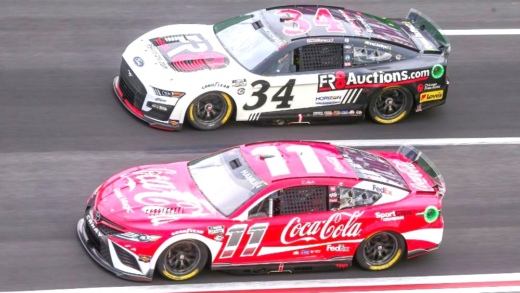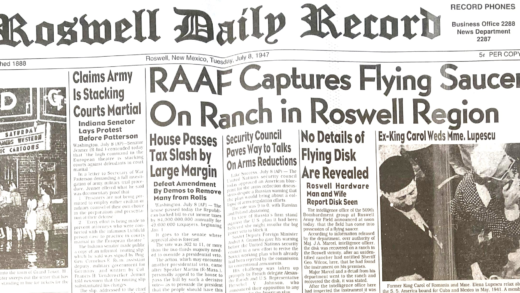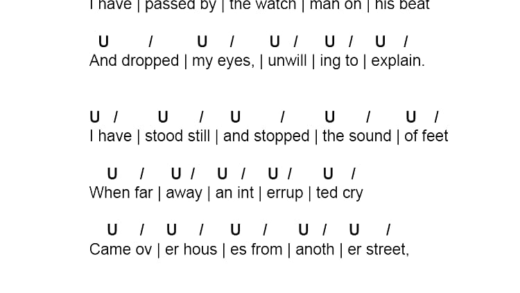The Mid Night Club was a legendary street racing group in Japan, known for its high-performance cars and thrilling races. The club disbanded due to law enforcement pressure, safety concerns, and internal conflicts. Despite its end, the club’s influence on car culture is significant, inspiring enthusiasts worldwide. Safety measures were inconsistently practiced during races, and resources for learning about the club remain available for those interested in its legacy.
Origins of the Mid Night Club: Where it all began
Mid Night Club emerged in the late 1980s in Tokyo, Japan, amidst a growing culture of street racing. This underground scene was not just about speed; it was a lifestyle for its members. The club was formed by a group of enthusiasts who shared a passion for cars and adrenaline. Initially, the races took place on the Wangan Highway, a long stretch of road known for its straightaways and high-speed potential.
The origins of the Mid Night Club can be traced back to a desire for speed and the thrill of competition. The members were predominantly young men who modified their vehicles to enhance performance. This included engine upgrades, aerodynamic modifications, and custom paint jobs. As the club grew, it became more organized, with members forming a community that respected racing etiquette and safety protocols, albeit loosely enforced.
One of the defining characteristics of the Mid Night Club was its strict membership rules. Only those with high-performance cars and a proven track record of racing were allowed to join. This exclusivity contributed to its allure and reputation. Over time, the club became legendary, drawing attention not only from car enthusiasts but also from law enforcement due to the illegal nature of their activities.
The Mid Night Club’s legacy is significant in the context of Japan’s automotive culture, influencing countless street racing groups and car enthusiasts worldwide. Its origins reflect a unique intersection of technology, speed, and camaraderie among racers.
Who Were the Members?: A look into the racers
The members of the Mid Night Club were not just racers; they were a diverse group of individuals united by their love for high-speed driving. Many were young men in their late teens to early twenties, but the club also included experienced drivers in their thirties who had a long history with cars. This mixture of ages brought a wealth of knowledge and skill to the group.
Key figures in the club included mechanics, engineers, and even some professional racers. Their backgrounds often influenced the types of cars they drove and their racing strategies. For instance, some members had access to advanced engineering knowledge, allowing them to push their vehicles to the limits. Others came from families with automotive backgrounds, giving them an early exposure to car culture.
The camaraderie within the club was palpable. Members shared tips on car modifications, racing techniques, and even personal experiences. They formed a close-knit community, often meeting not just for races but also for social gatherings and car shows. This bond was crucial, as it provided a support system in a high-stakes environment where safety was often overlooked.
While the club is often associated with its male members, there were also female racers who broke stereotypes and made their mark. These women contributed to the racing culture, proving that passion for speed knows no gender.
Cars that Roared: Popular vehicles among the racers
At the heart of the Mid Night Club were the cars that defined its identity. The vehicles ranged from modified Japanese sports cars to American muscle cars, each with its own unique characteristics and modifications. The most popular models included the Nissan Skyline GT-R, Toyota Supra, and Mazda RX-7. These cars were not just transportation; they were extensions of their owners’ personalities.
Members often invested heavily in their vehicles, making upgrades to improve speed, handling, and appearance. Common modifications included turbochargers, suspension upgrades, and lightweight body kits. For many racers, the thrill of competition lay in the ability to outpace their opponents with a car that they had meticulously crafted.
Another notable aspect of the Mid Night Club was the emphasis on street legality. While many vehicles were capable of incredible speeds, members were aware of the risks involved. Some cars were specifically built for racing, while others were daily drivers that had been enhanced for performance. This blend of practicality and speed contributed to the club’s dynamic atmosphere.
The cars of the Mid Night Club symbolize more than just speed; they represent a culture of innovation and passion that continues to influence car enthusiasts today. The legacy of these vehicles is evident in the modern tuning scene, where the quest for performance and aesthetic perfection remains as vibrant as ever.
Race Organization: How Races Were Set Up and Executed
Mid Night Club was known for its well-organized yet clandestine street racing events. Races were typically set up during the late-night hours when traffic was minimal, allowing for high-speed thrills without interruptions. Participants communicated through word of mouth and underground forums, ensuring that only serious racers were informed about the events.
The logistics of these races were fascinating. Organizers would scout locations, often choosing stretches of the Wangan Highway or other deserted roads. Key factors included:
- Timing: Races were usually held late at night, often around midnight, to avoid police presence.
- Participants: Only select members with high-performance vehicles were invited, maintaining exclusivity.
- Race Format: Typically, the races were head-to-head sprints, where two cars would compete over a set distance.
- Safety Measures: Although loosely enforced, some safety protocols were established, including designated spotters who would alert racers of any incoming traffic.
These well-executed plans contributed to the thrill of racing while also fostering a sense of community among members. The excitement of competition and the adrenaline rush were palpable, making each event memorable.
Unique Features: What Set the Mid Night Club Apart from Others
The Mid Night Club distinguished itself from other street racing groups through several unique features. First and foremost was its commitment to speed and performance. Unlike many racing clubs, the Mid Night Club prioritized technical modifications and engineering prowess, leading to some of the fastest street-legal cars on the road.
Additionally, the club had a strict code of conduct. Members adhered to a set of unwritten rules that emphasized respect, safety, and sportsmanship. This created a culture where racers were not only competitors but also friends and mentors.
Moreover, the secrecy surrounding the club added to its mystique. The exclusive nature of membership and the underground racing scene attracted enthusiasts eager to prove themselves. Key distinguishing characteristics included:
- High-Performance Vehicles: Only the fastest and most modified cars were accepted.
- Community Spirit: Members often helped each other with car modifications and shared racing strategies.
- Unique Racing Techniques: Strategies and techniques were often shared in private gatherings, enhancing the skill level of participants.
These factors contributed to the Mid Night Club’s legendary status within the street racing community, making it a benchmark for future racing clubs.
Legendary Races: Memorable Stories from the Track
The Mid Night Club is synonymous with legendary races that have become part of automotive folklore. One of the most famous was the “Battle of the Titans,” where two iconic cars, a modified Nissan Skyline GT-R and a Toyota Supra, faced off in a high-stakes race that drew a large crowd of enthusiasts. The tension was palpable as both cars lined up, engines roaring, ready to unleash their power.
Another memorable event was the “Midnight Challenge,” which featured unexpected weather conditions. A sudden downpour transformed the race into a test of skill rather than sheer speed. Racers had to adapt their strategies on the fly, showcasing their driving expertise.
These races were often marked by camaraderie and rivalry. Racers would swap tales of their encounters and experiences, building a rich tapestry of stories that defined the club’s legacy. Each race was not just about winning but about the thrill of competition and the friendships formed on the road. The excitement, challenges, and unforgettable moments are what made the Mid Night Club legendary in the annals of street racing history.
The Disbandment: Why the Mid Night Club Came to an End
The Mid Night Club eventually disbanded due to a combination of heightened law enforcement pressure, increased risks associated with street racing, and internal disagreements among members. As the club gained notoriety, police began cracking down on illegal street racing, leading to arrests and vehicle seizures. This crackdown made it increasingly difficult for members to organize races without facing legal repercussions.
Additionally, the thrill of racing on public roads became overshadowed by the dangers involved. The risk of accidents and injuries prompted some members to reconsider their participation in the club. Many racers had witnessed or experienced serious incidents, which raised concerns about safety.
Internal conflicts also played a role in the club’s dissolution. As the community grew, differing opinions on racing styles, safety measures, and club management emerged. This fragmentation weakened the sense of unity that had initially defined the Mid Night Club, ultimately leading to its decline. The combination of these factors contributed to the club’s end, but its legacy lives on in the hearts of street racing enthusiasts.
Lasting Legacy: Influence on Car Culture in Japan and Beyond
The Mid Night Club has left an indelible mark on car culture, both in Japan and internationally. Its focus on high-performance vehicles and technical modifications set a precedent for future street racing communities. Today, many car enthusiasts look back at the club as a benchmark of excellence in automotive tuning and racing.
The influence of the Mid Night Club can be seen in various aspects of car culture. For instance, the popularity of tuning Japanese sports cars can be traced back to the innovations and modifications pioneered by club members. Additionally, the spirit of camaraderie and competition fostered by the club inspired countless racing groups worldwide, encouraging a culture of respect and support among racers.
Moreover, the stories of legendary races continue to inspire new generations of car enthusiasts. Films, documentaries, and online forums often reference the Mid Night Club, highlighting its thrilling escapades and the passion of its members. The club’s legacy serves as a reminder of the excitement and innovation that can emerge from a shared love for speed and performance.
Safety First?: Measures Taken During Races
While the Mid Night Club is often associated with the adrenaline rush of street racing, safety was a topic of discussion among members, albeit inconsistently practiced. Some informal safety measures were established to mitigate risks during races, including:
- Designated Spotters: Members would appoint spotters to monitor traffic and signal racers when it was safe to proceed.
- Pre-Race Briefings: Before races, participants often held briefings to discuss the route and potential hazards.
- Emergency Protocols: Some members carried basic first-aid supplies and communicated emergency contact information.
Despite these precautions, the nature of street racing inherently involved risks. Many members recognized the need for improved safety practices but often prioritized the thrill of racing over strict adherence to safety protocols. This led to a culture where safety was a shared responsibility, yet often overlooked.
Learning More Today: Resources for Enthusiasts
For those interested in learning more about the Mid Night Club and its impact on car culture, several resources are available. Enthusiasts can explore:
- Documentaries: Films that showcase the history and stories of the Mid Night Club can provide insight into its legendary status.
- Online Forums: Communities dedicated to car culture often discuss the Mid Night Club, sharing experiences and knowledge about street racing.
- Books: Publications on Japanese car culture frequently feature chapters on the Mid Night Club, detailing its influence and legacy.
Engaging with these resources can help newcomers appreciate the club’s significance and understand the broader context of street racing culture. Whether through documentaries, discussions, or literature, the legacy of the Mid Night Club remains vibrant, inspiring car enthusiasts to push the limits of performance and innovation.





Comments are closed.